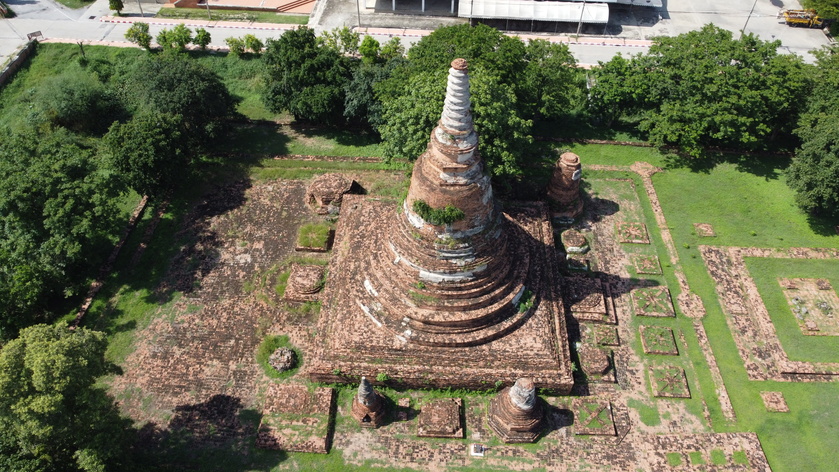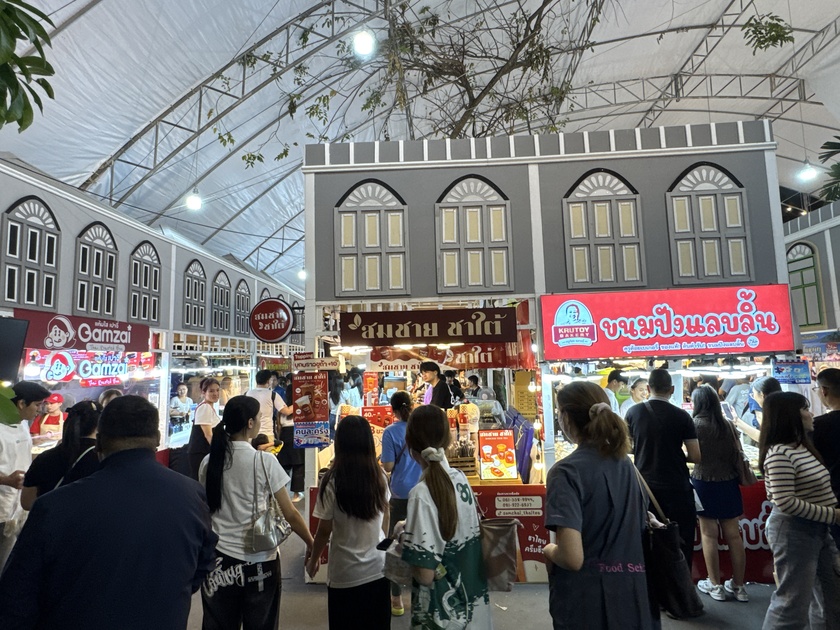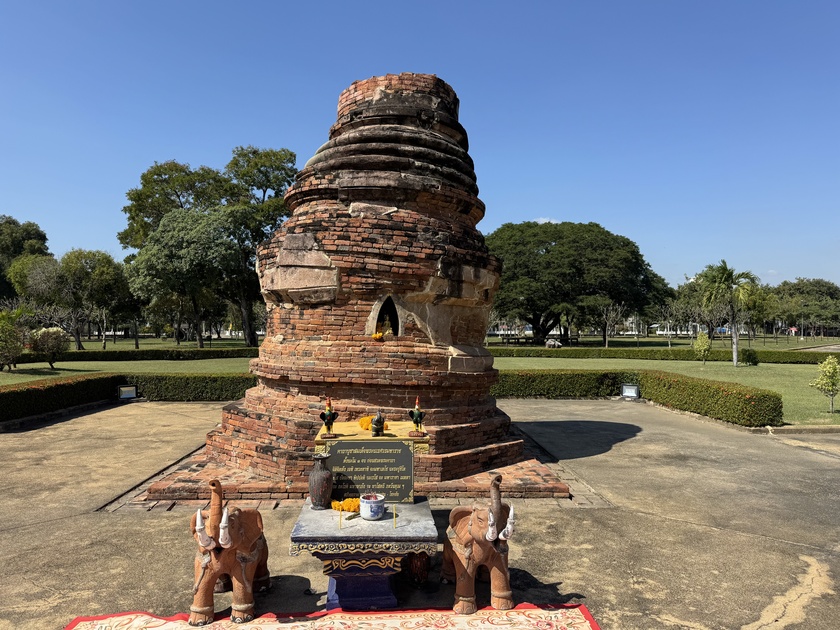Wat Chakkrawat วัดจักรวรรดิ์
Wat Jakrawan (Chakrawan), also called Wat Chao Mon, is a restored ruin located off the city island in the eastern area of Ayutthaya near the train station.
The temple ruin is situated on the west bank of Khlong Ayodhya. Wat Kudi Dao lies opposite of it, while to the north stands Wat Ayodhya. On its west side is Wat Pradu Songtham.
The monastery derives its name from the "Traiphum", the three-world system. The ancient Theravada tradition saw a flat world with Heaven above and Hell below, which was later modified to a ten thousand world vision.
According to the Traiphum, the universe has been for ever occupied by an infinite number of Chakrawans (groups of worlds) all exactly similar, and each embracing a world of men, with a series of heavens and hells. Each of these worlds (solar systems) depends on a central mountain named
Phra Meru. Around Mount Meru are eight circular belts of ocean, divided from each other by seven annular mountains ...
Wat Na Tang Nok (Thai: วัดหน้าต่างนอก, also spelled Wat Natang Nok or Wat Na Tang Nork) is a historic Buddhist temple affiliated with the Mahanikay sect, located in Bang Sai District, Phra Nakhon Si Ayutthaya Province, Thailand. It’s situated in the rural area near Ban Na Mai, surrounded by fields and canals, giving it a peaceful, traditional atmosphere away from the main tourist crowds in central Ayutthaya.
The temple is best known for its association with Luang Pho Jong (Phra Athikan Jong Buddhāsaro), a highly revered monk who served as abbot here. Born in 1872 AD and passing in 1965 AD, Luang Pho Jong was one of Ayutthaya’s most respected masters during the early to mid-20th century. He was renowned for his meditative prowess, protective amulets (especially during the Indochina War era), and sacred objects like wealth-attracting fish motifs. Collectors still seek his amulets today for blessings of protection, wealth, and charisma.
The temple itself features ...
The annual Red Cross Fair will be held at the Lumpini Park in Bangkok from December 10 to 21, 2025.
The Thai Red Cross Society said the fair will feature special priced products, games and lucky drawings. The event takes place over 11 days and 11 nights from 11am and 11pm.
Royal projects will also be showcased at booths as well as memorials to the late queen mother.
All proceeds will go to support the society’s mission in helping the underprivileged.
A national institution, the Red Cross fair has been held since debuting on March 31, 1923, 102 years ago during the reign of King Vajiravudh (Rama VI).
This is a great event with so much to see and do. It’s a way to spend an evening walking around one of the best green spaces in the city while you try some of the best Thai food found anywhere.
102nd Annual Red Cross Fair Night Market - Lumphini Park - Bangkok Thailand 2025
King Naresuan Monument
A commanding 5-meter-tall bronze statue erected in 2002, depicting King Naresuan the Great in full battle regalia astride his war elephant, sword raised in the decisive moment of the 1593 elephant duel. The king wears a pointed crown and flowing royal robes, while the elephant is shown mid-stride with trunk raised and tusks forward, capturing the intensity of combat. The statue stands on a high concrete pedestal surrounded by offerings of incense, flowers, and garlands, and is framed by the vast rice fields that locals insist were the actual battlefield of Nong Sarai.
Don Chedi Stupa (Chedi Yutthahatthi)
The centerpiece of Wat Don Chedi, this tall, elegant late-Ayutthaya-period chedi is believed by Kanchanaburi locals to be the very victory monument raised by King Naresuan immediately after slaying the Burmese crown prince Mingyi Swa. Restored to a brilliant white with a square base, recessed niches, and a slender bell-shaped dome topped by a golden spire, it rises dramatically from a low ...

















































